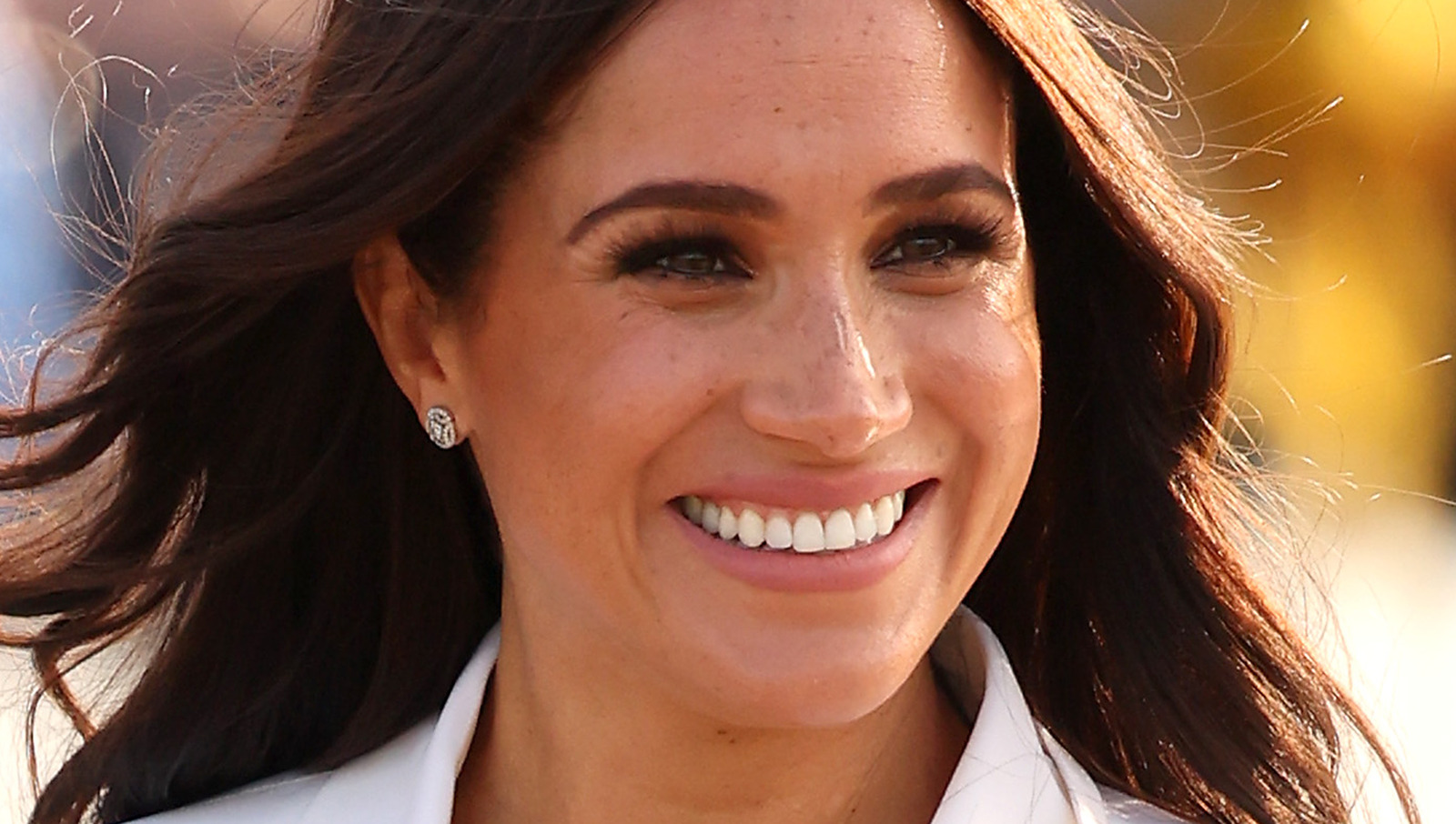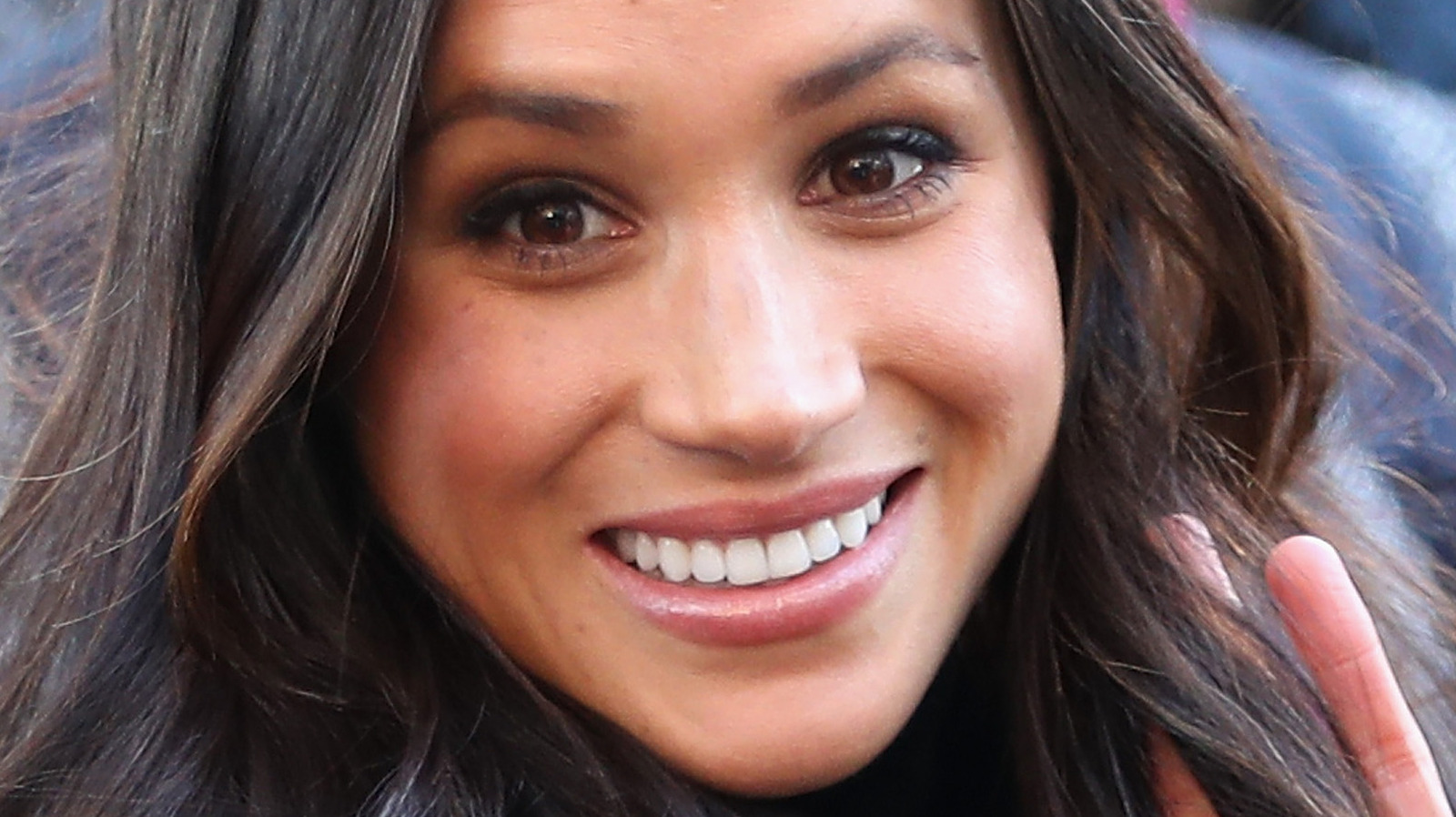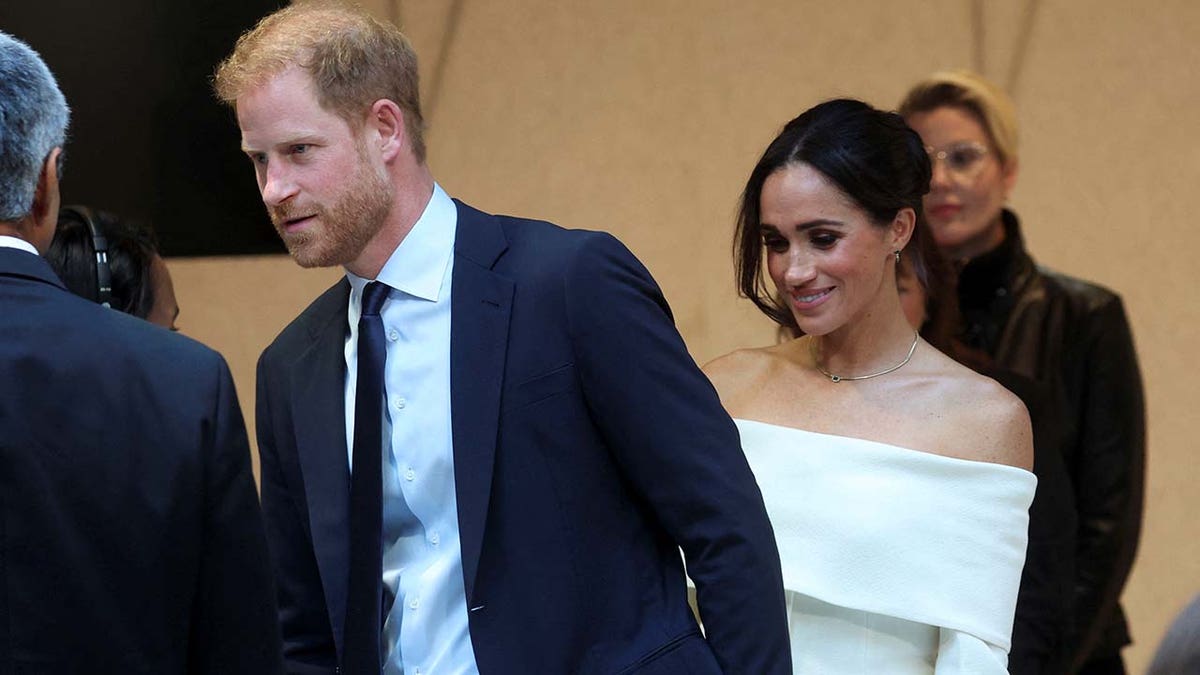Did Meghan Markle's vision for her royal life clash fundamentally with the institution she married into? It's becoming increasingly clear that the Duchess of Sussex, now 43, had expectations and aspirations that the rigid structure of the British royal family simply couldn't accommodate. The narrative surrounding Meghan's departure from the UK has been complex and often contradictory, but the central question remains: what exactly did she want, and why couldn't she have it?
The move of Prince Harry and Meghan Markle to California from the UK was a seismic event, shaking the foundations of the monarchy. While Meghan may have found solace and familiarity in returning to her native land, Harry's transition was undoubtedly more profound. Sources close to the couple suggest that Meghan always envisioned a life outside the constraints of the royal family, perhaps even before fully understanding the implications for Prince Harry. Some insiders have even alleged that Meghan "never wanted" to base herself in the United Kingdom, and that the realization of Harrys financial limitations within the royal structure further solidified her intention to seek independence. The fairytale wedding of Meghan Markle and Prince Harry in 2018 captivated the world, but behind the scenes, it seems, a different story was unfolding. The decision to step back as senior members of the British royal family in 2020, often referred to as "Megxit," was reportedly a source of "regret" for Meghan, though the nature of this regret remains a subject of speculation. The Duke and Duchess of Sussex ultimately relinquished their royal duties amidst a storm of negative media attention.
| Category | Information |
|---|---|
| Full Name | Rachel Meghan Markle |
| Title | Duchess of Sussex |
| Date of Birth | August 4, 1981 |
| Age | 43 |
| Place of Birth | Los Angeles, California, USA |
| Nationality | American |
| Spouse | Prince Harry, Duke of Sussex |
| Children | Archie Harrison Mountbatten-Windsor, Lilibet Diana Mountbatten-Windsor |
| Education | Northwestern University (Bachelor's degree in Theatre and International Studies) |
| Occupation | Actress, Philanthropist |
| Years Active (Acting) | 2002-2018 |
| Notable Role | Rachel Zane in the TV series "Suits" |
| Net Worth (Estimated) | $60 million (with Prince Harry) |
| Philanthropic Interests | Gender equality, women's empowerment, social justice |
| Royal Titles (Former) | Her Royal Highness The Duchess of Sussex, Countess of Dumbarton, Baroness Kilkeel |
| Official Website | sussex.com |
The events surrounding the Sussexes' departure from royal life reached a critical point when Buckingham Palace issued a statement on January 18, declaring that Harry and Meghan were "no longer" working members of the royal family. This formal announcement underscored the finality of their decision and the irreversible changes it brought to the monarchy. The Sussexes addressed their plans in a bombshell interview with Oprah Winfrey in the spring of 2021, offering their perspective on the challenges and restrictions they faced within the royal institution. Rather than seeking reconciliation, Harry and Meghan chose to stand their ground, expressing their desire to escape what they perceived as a stifling "royal fishbowl." Royal expert Jennie Bond suggests that Meghan Markle is now encouraging Prince Harry to move forward, focusing on the future rather than dwelling on the past. The Duchess of Sussex currently resides in Montecito, California, having established a new life and identity outside the confines of the royal family.
- Nikola Jokics Wife Natalija Jokic Age Net Worth More
- Hocus Pocuss Mary Sanderson The Witch The Actor More
On Friday, 19 February 2021 at 11:08 pm, the sentiments of Harry and Meghan were articulated clearly: they remain committed to public service but prefer to pursue their philanthropic endeavors independently, outside the umbrella of the royal family. Their intention, as they stated, was to step back as 'senior' members of the royal family and strive for financial independence while continuing to support Her Majesty the Queen. This post effectively marked their formal exit from the institution. While some speculated about a potential "comeback campaign," drawing parallels with King Edward VIII's abdication, it appears that Harry's primary focus is now on seeking reconciliation with senior royals. The controversial 2020 heir photo reportedly caused friction with Prince Harry and Meghan Markle, who allegedly felt that the entire institution was working against them. Their experiences were documented in the "Harry & Meghan" documentary series, where they shared their perspectives on life within the royal family.
The "Heart of Invictus" series further explored the Duke's emotional journey and his dedication to supporting wounded veterans. Harry revealed that he and Meghan Markle were financially cut off from the royal family in early 2020, relying on funds from his mother's estate until securing a $120 million deal with Netflix and Spotify. Some reports suggest that Meghan Markle is taking on a nurturing role, allegedly "reparenting" Prince Harry as they navigate their new life together in the United States. The couple is said to be deeply in love, embracing their freedom and independence away from the royal spotlight. Prior to "Megxit," Meghan Markle reportedly encountered several challenges and disagreements within the royal family. One particular issue was the strict scheduling protocols, which dictated when she could leave for appointments or events, ensuring that she didn't inadvertently coincide with other senior royals.
The memory of Meghan Markle and Prince Harry at the Invictus Games Toronto 2017 serves as a reminder of their shared commitment to charitable causes. According to Jennie Bond, Prince William wisely advised his brother to proceed cautiously and allow Meghan the opportunity to assess whether royal life aligned with her aspirations. Prince Harry and Meghan Markle's decision to leave the royal family is undeniably one of the most significant events in recent monarchical history. The couple publicly announced their decision, setting in motion a chain of events that would reshape the royal landscape. While Meghan's personal net worth was reportedly around $5 million, her family's financial situation was less robust. According to the New Zealand Herald, Meghan's father, Thomas Wayne Markle, faced considerable financial challenges.
- Madison Beers Trauma Nude Leaks Apology The Full Story
- School Of Rock Stars From Costars To Happily Ever After
The details emerging from various sources paint a picture of a woman with ambition, vision, and a strong sense of self, entering an institution steeped in tradition and protocol. The two things the Duchess of Sussex reportedly wanted from the royal family, which she couldn't have, are believed to be a combination of greater autonomy and a more modern approach to royal duties. She envisioned a role that allowed her to leverage her platform for meaningful social impact, but the constraints of the monarchy, coupled with internal resistance to change, ultimately proved insurmountable. It is suggested that she wanted to champion causes that were close to her heart, such as gender equality and social justice, with a level of independence and directness that the royal family was unwilling to grant. The idea of balancing tradition with modern activism seemed to be a point of contention from the beginning.
Furthermore, it's speculated that Meghan desired a greater level of privacy and protection from the relentless media scrutiny that plagued her time in the UK. The constant barrage of negative press, often fueled by prejudice and misinformation, took a significant toll on her mental health and well-being. While the royal family offers a certain degree of protection, it wasn't sufficient to shield Meghan from the vitriol that she faced. The desire for a more controlled media environment, where she could dictate the narrative and protect her family from undue harassment, was likely a key factor in her decision to leave. This isn't to say that Meghan was entirely blameless in the breakdown of her relationship with the royal family. Sources suggest that her strong personality and unwillingness to conform to traditional expectations may have ruffled feathers within the institution. However, it's clear that the royal family's inability to adapt to her modern sensibilities and accommodate her desire for greater autonomy ultimately led to an irreparable rift.
Prince Harry's role in this saga is equally complex. He clearly felt torn between his loyalty to his family and his commitment to his wife. The decision to step back from royal duties was undoubtedly a difficult one, but it was ultimately driven by a desire to protect Meghan and create a more sustainable future for their family. Harry's experience growing up within the royal family likely made him more aware of the limitations and constraints it imposed, making him more willing to challenge the status quo. His willingness to stand by Meghan, even at the cost of his own position within the monarchy, speaks volumes about his love and devotion. The move to California has allowed them to forge a new path, where they can pursue their philanthropic goals and raise their children in a more private and supportive environment. While they may have faced criticism for their decision, they have also garnered support from those who believe they were justified in seeking a better life.
The narrative surrounding Meghan Markle and the royal family is unlikely to fade away anytime soon. The issues that led to their departure the clash between tradition and modernity, the pressure of media scrutiny, and the desire for greater autonomy remain relevant and continue to shape the conversation about the future of the monarchy. It's a story about a woman who dared to challenge the status quo, a prince who chose love over duty, and an institution struggling to adapt to a changing world. As they embark on their new chapter, the Duke and Duchess of Sussex have undoubtedly left an indelible mark on the royal family and the world at large.
One can speculate about the specific promises and expectations that were not met. It is probable Meghan Markle's vision was not simply about personal ambition. She, with Harry, seemed to be trying to modernize the monarchy, to make it more relevant and accessible to a diverse and global audience. This progressive vision appears to have been perceived as a threat by some within the institution, who were resistant to change and protective of traditional ways. The resistance perhaps played a role in a media strategy that didnt benefit her.
Beyond the broader issues of modernizing the monarchy, there might have been more personal frustrations. The inability to control her own schedule, to choose which events to attend and which causes to support, could have been a significant source of tension. The rigid hierarchy and adherence to protocol might have felt stifling to someone who was used to having more autonomy in her professional life. The limited ability to speak out on issues that were important to her, to express her own opinions without being subjected to intense scrutiny and criticism, could have also been a factor. The two things the Duchess of Sussex reportedly wanted might have boiled down to a desire for agency and authenticity, the freedom to be herself and to use her platform to make a positive impact on the world, without being constrained by the outdated rules and expectations of the royal family.
In essence, Meghan Markle's story is a cautionary tale about the challenges of marrying into an institution that is deeply entrenched in tradition and resistant to change. It highlights the importance of communication, compromise, and a willingness to adapt on both sides. It also raises important questions about the role of the media in shaping public perception and the impact of negative press on individuals and institutions. The long-term consequences of "Megxit" remain to be seen, but it is clear that it has fundamentally altered the relationship between the monarchy and the public and forced a reckoning with issues of race, gender, and the very definition of what it means to be a royal in the 21st century.
The aftershocks of Harry and Meghan's decision continue to reverberate through the royal family. There is increasing pressure on the remaining senior royals to adapt and evolve, to become more responsive to the needs and concerns of a diverse and changing society. The departure of the Sussexes has also sparked a wider debate about the future of the monarchy, its relevance in the modern world, and its ability to attract and retain future generations of royals. One possible outcome is a gradual shift towards a more streamlined and less formal monarchy, with a greater emphasis on public service and less emphasis on tradition and protocol. This shift could involve giving younger royals more autonomy to pursue their own interests and passions, and allowing them to engage more directly with the public. It could also involve a re-evaluation of the monarchy's financial structure, to ensure that it is sustainable and accountable.
It is also possible that the monarchy will remain largely unchanged, clinging to its traditions and resisting calls for reform. This approach could lead to further alienation and disengagement from the public, particularly among younger generations. It could also make it more difficult to attract and retain future royals, as potential heirs to the throne may be reluctant to sacrifice their personal freedom and autonomy for the sake of tradition. Ultimately, the future of the monarchy will depend on its ability to adapt and evolve in response to the challenges and opportunities of the 21st century. It will require strong leadership, a willingness to listen to diverse voices, and a commitment to serving the public good. Whether the royal family can rise to these challenges remains to be seen, but the story of Meghan Markle and Prince Harry serves as a stark reminder of the consequences of failing to do so.
- Royal Update Meghan Markle Shares Rare Photos Of Archie Lilibet
- Ozzy Osbourne Health Update I Cant Walk But Reunion News


